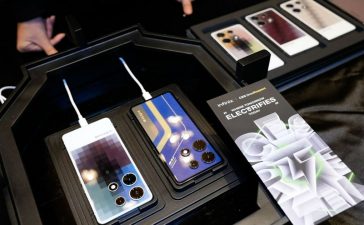
Technological advancements and innovations have the ability to transform entire industries, with healthcare being no exception. For example, a previous article discusses how artificial intelligence helps in diagnosing lung cancer from a simple blood draw. Specifically, the company LungLife AI’s diagnostic tool can reduce analysis time by 70%. Considering lung cancer accounts for 25% of all cancer deaths, this healthcare technology can enhance health outcomes among cancer patients through early detection.
Beyond cancer diagnosis and management, healthcare technologies have also been crucial in the optical care industry. The examples below illustrate how eye exams in the UK have become more advanced to meet changing vision needs and deliver more customised optical care.
OCT Scanning
Many eye conditions, such as cataracts, can be managed and treated successfully if detected at an early stage. Since most disease risk factors and structural changes in the eye are not immediately visible, optical coherence tomography (OCT) was developed to achieve three-dimensional, high-resolution scans of the back of the eye.
OCT scans are included in Vision Express’ advanced eye test offerings, alongside the standard visual health screenings with the help of a letter chart, slit lamp, or cover test. Since this type of imaging technology can help detect common eye diseases, Vision Express aims to make it more accessible through online appointment booking and affordable costs funded by the NHS or private insurance plans.
Digital Retinal Imaging
Besides OCT, another innovative imaging technology increasingly becoming available among optical offices is digital retinal imaging. As the digital camera can snap high-quality images of the retina, optic nerve, and other retinal structures, the eye doctor can also use it as an early screening tool for various eye conditions.
OPSM is one of the optical stores offering this industry-leading technology, allowing patients to add a 200-degree, ultra-wide digital retinal scan to the standard eye test experience. The image covers more than 80% of the retina and is four times larger than earlier versions of digital retinal scans, thus revealing retinal changes like structural damage and blood vessel abnormalities.
Non-Contact Tonometer
The prevalence of glaucoma in the UK has been alarming, with researchers estimating glaucoma patients to increase by almost half (44%) from 2015 to 2035. Many biological and environmental factors, such as age and an unbalanced diet, can contribute to this trend.
However, modern technology is enabling early glaucoma detection through non-contact or air-puff tonometers, which measure intraocular pressure (IOP) or air pressure in the eye as a disease risk indicator. The device only uses a small puff of air to flatten the cornea in a non-invasive way — eliminating the need for numbing eye drops and ultimately making the process much easier for patients and doctors alike.
Online Eye Test Services
Part of digital transformation in healthcare is expanding public access to essential care services. In this context, UK healthcare business and telemedicine specialist Ocushield has developed an online eye examination to enable employees to monitor vision changes and detect potential eye conditions within minutes. The service includes multiple eye tests for depth perception, visual acuity, colour recognition, and muscle balance.
Such examples of eye test technologies demonstrate the importance of tapping into modern innovations for improved patient outcomes and access to care. Optical offices, stores, and retailers are then tasked to spread awareness about these services to encourage more residents in the UK to get their eyes regularly tested.











